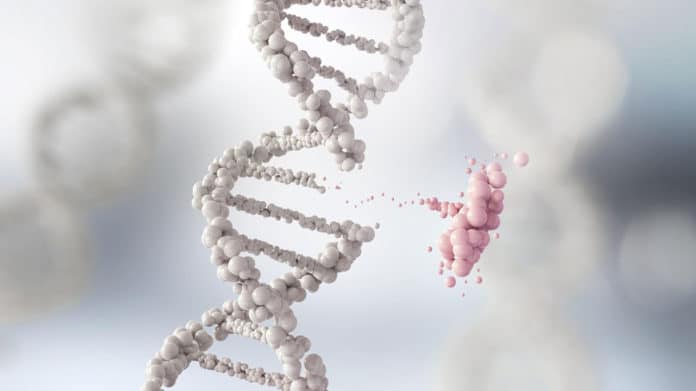The world of genetics is staggeringly complex. Proteins, the product of genes, interact with genes, influencing and regulating the rhythm of their expression.
But how do these genes activate, what to make, and when to stop? How do they work as part of intricate molecular machinery without being confused with other nearby genes?
A new study by EPFL and the University of Geneva answers these questions. Using CRISPR technology, scientists uncovered the complex dance of genes involved in embryonic development.
A zinc finger protein known as CTCF is a multifunctional protein. Depending on the cell’s needs, it can either turn on gene transcription or repress it.
CTCF can bind to specific sites on the genome. This binding plays an essential role in the packaging of DNA in the cell’s nucleus as chromatin.
Scientists were interested in that CTCF and its binding sites can also block the communication between short DNA sequences known as gene promoters and gene enhancers. Enhancers are where activator proteins bind to increase the likelihood that a gene will be transcribed; promoters are where transcription factors bind to kickstart the process.
Using a strategy based on CRISPR/Cas9, scientists disrupted five contiguous locations where CTCFs bind the genome to control the activation of a family of genes known as the HoxD cluster. These genes encode proteins that are important in organizing the structures during the development of the mammalian embryo. The transcription factors are also highly conserved, so they don’t differ significantly across vertebrate species.
These CTCF-binding sites within the Hox clusters are significant for enhancers to select the suitable sub-groups of target genes efficiently.
But given the dual function of CTCF, not all its binding sites promote gene activation, and some have an inhibitory effect on gene transcription. The two roles seem to depend on the type of tissue where the genes operate, meaning that some CTCF binding sites can display opposite activities in different tissues.
The study revealed that although CTCF sites within the Hox cluster act in multiple roles, they all together contribute to the creation of what is known as a “TAD border” (TAD stands for “topologically associated domain). This is a defined region on the genome within which genes can interact with each other, helping to organize the tremendous complexity of the “genetic dance.”
Scientists noted, “The variety of tasks uncovered for these CTCF sites may explain their amazing evolutionary conservation amongst the Hox clusters of all vertebrates.”
Journal Reference:
- Ana Rita Amândio, Leonardo Beccari, Lucille Lopez-Delisle, Bénédicte Mascrez, Jozsef Zakany, Sandra Gitto, Denis Duboule. Sequential in-cis mutagenesis in vivo reveals various functions for CTCF sites at the mouse HoxD cluster. Genes and Development 28 October 2021. DOI: 10.1101/gad.348934.121
